Mie Asahi Logistics Center (Asahi-cho, Mie-gun, Mie Pref.)Sustainable Logistics Facilities That Co-exist with the Local Community

We spotlight Mie Asahi Logistics Center, a logistics center for Japan Transcity Corporation. This is an example of how we worked with the company, which has made the promotion of environmentally conscious business one of its key issues, to solve two environmental challenges: decarbonization and biodiversity conservation.
Decarbonization Initiatives
Obtained highest rating in ZEB (Net Zero Energy Building) certification
The building is equipped with 3,146 kW of photovoltaic panels on the roof. As a result of the facility design enables energy conservation while maintaining a comfortable indoor environment as well as energy creation, GHG emmisions were reduced by 1,913t-CO2 per year*. It has obtained the highest rank in the BELS rating and was recognized as a Net Zero Energy Building.
* Reduction in primary energy consumption compared to the reference building in the Energy Consumption Performance Calculation Program calculation results, converted to GHG emissions.
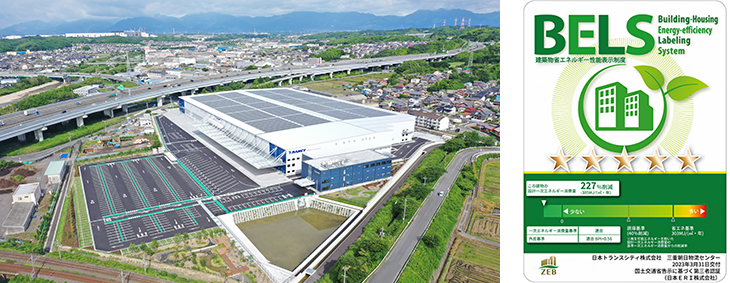
Additionally, surplus electricity is sold to Chubu Electric Power Miraiz and we have developed a scheme of utilizing this renewable energy at other Japan Transcity Group facilities, thereby achieving a reduction in GHG emissions through the use of renewable energy derived from in-house power generation. As a result, they expect to reduce the Group's GHG emissions by 15,768 t-CO2 per year, equivalent to 10% of our FY2020 GHG emissions.
Biodiversity Conservation Initiatives
Creation of a diverse ecological environment connecting the Asahi Hills to the Asake River
The building site is located in an area with a rich nature, spanning from the Asahi Hills to the Asake River, and the surrounding area is covered with vast rice paddies and waterways. As such, we planned a logistics center in harmony and co-existing with the local area. On the site, we have created habitats for plants and animals, including aquatic, grassland, forest, and gravel areas, creating a total of 9,312 m2 of green space. It was the first logistics facility in the Chubu region*1 to receive ABINC certification, awarded by the Association for Business Innovation in harmony with Nature and Community ®*2.
- *1 Niigata, Toyama, Ishikawa, Fukui, Yamanashi, Nagano, Gifu, Shizuoka, Aichi, and Mie Prefecture
- *2 Obtained jointly by Japan Transcity and Daiwa House Industry
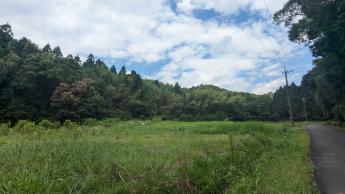
Nearby woodland
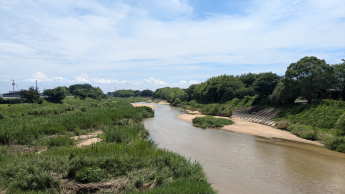
Asake River
Based on the results of a vegetation survey of the neighborhood, a planting plan was developed, focusing on konara oak and sawtooth oak, which grow wild in the Asahi Hills. In addition, the plan is to attract birds by selecting food plants such as yamazakura (mountain cherry tree). The area surrounding the building site was divided into seven areas and planted according to themes such as landscape improvement, sound insulation, and creation of cohesive green spaces.
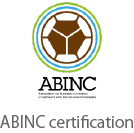
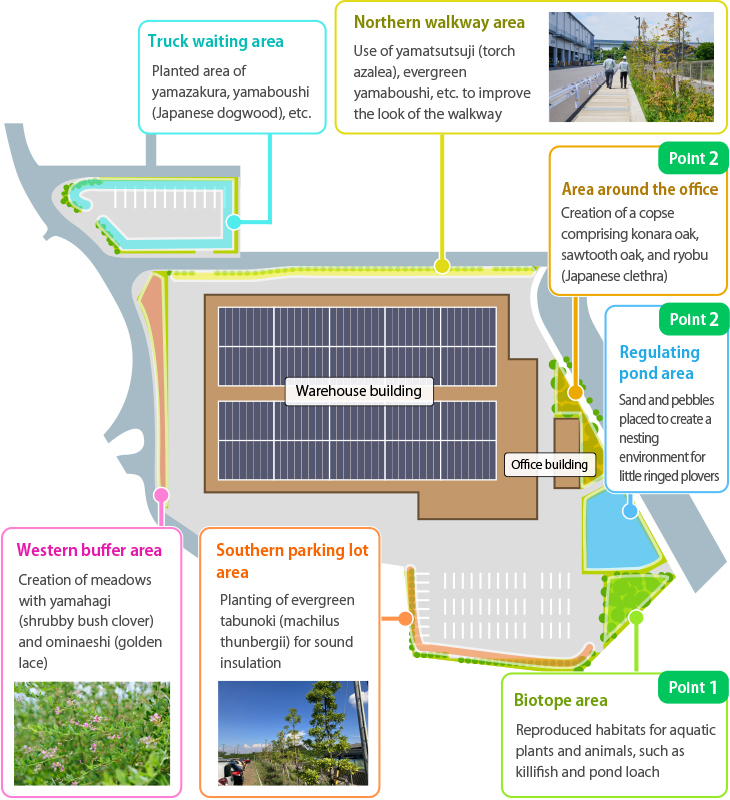
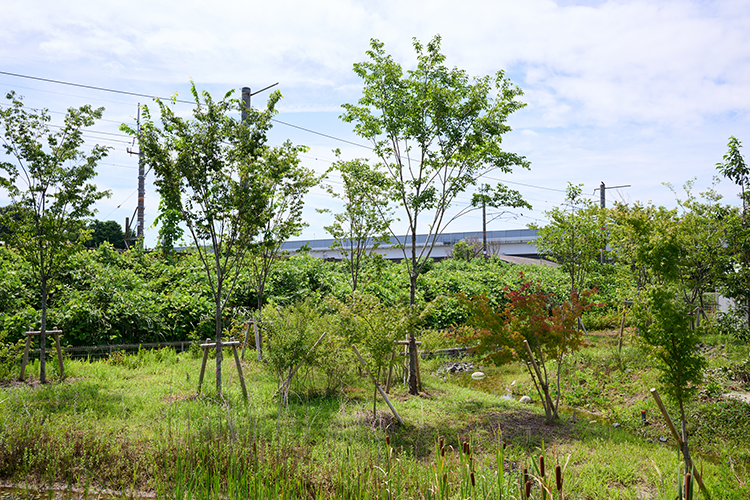
A biotope was established on the site as a habitat for living creatures, such as killifish, pond loach, and river snails. Furthermore, fireflies have been confirmed in the area around the facility, and over time we will work to develop the environment with the aim of creating an aquatic environment that will be a habitat for fireflies in the future. Also, the riparian woodland in the area is designed to make maximum use of natural cycles, so that fallen leaves and trees decompose where they are and turn into soil.
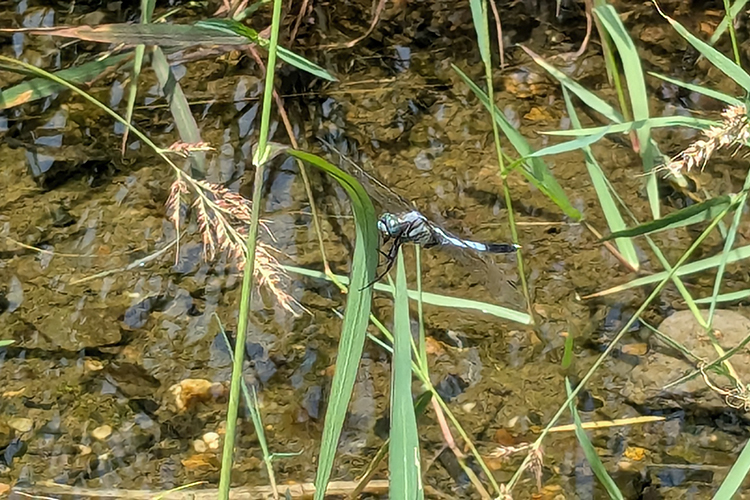
Common skimmer dragonfly
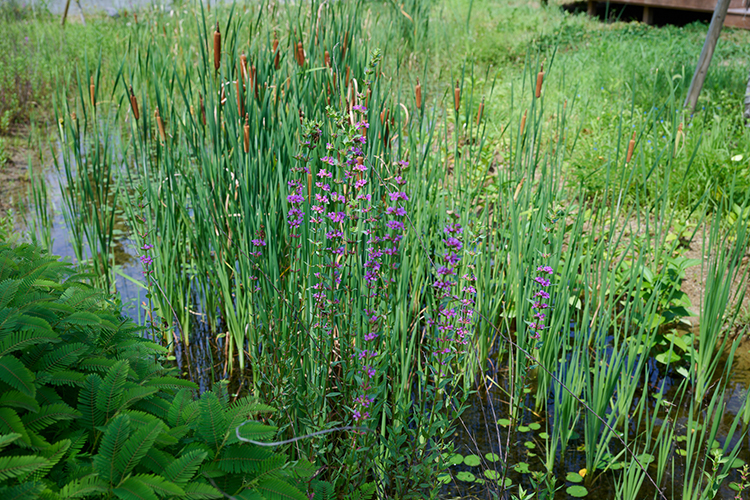
Purple loosestrife (foreground),
a water plant, and cat’s tail (background),
both of which are water plants
Ties with the local community through monitoring and maintenance
The maintenance of vegetation throughout the site is regularly conducted by employees. In addition, the biotope is maintained once a month by a local citizens' group, the Uzunawa Firefly Association, and is also used as a place for communication with the local community.
In addition, creature observation events are held regularly and creatures caught in ponds and streams in the surrounding woodland are released to promote habitat maintenance. In the future, we will further deepen our ties with the community through ongoing nature observation events and environmental education programs.

Reproducing a stream
suitable for fireflies
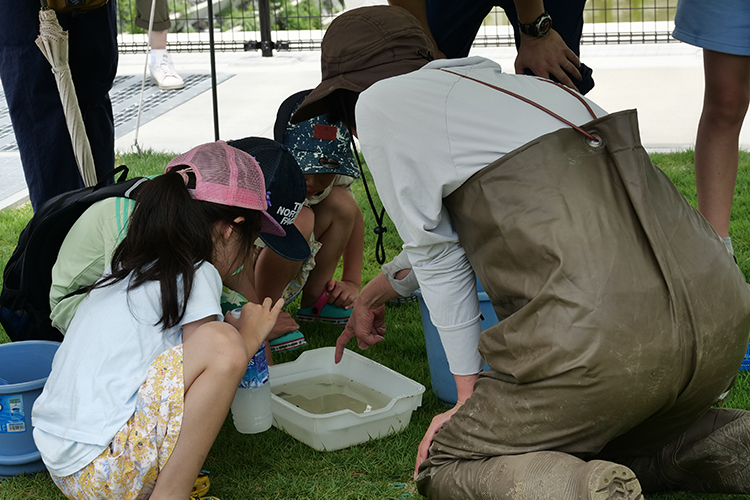
Observing living creatures
(regulating pond area and area around the office)
Because of the proximity of the habitat of the little ringed plover, a semi-endangered species in Mie Prefecture, sand and pebbles were placed in the secondary regulatory pond to create a nesting environment. Greening blocks were used for the walls. In the area surrounding the office, we selected mostly food plants for planted trees to create a cohesive, three-dimensional green space while attracting birds to the area.

Regulating pond area
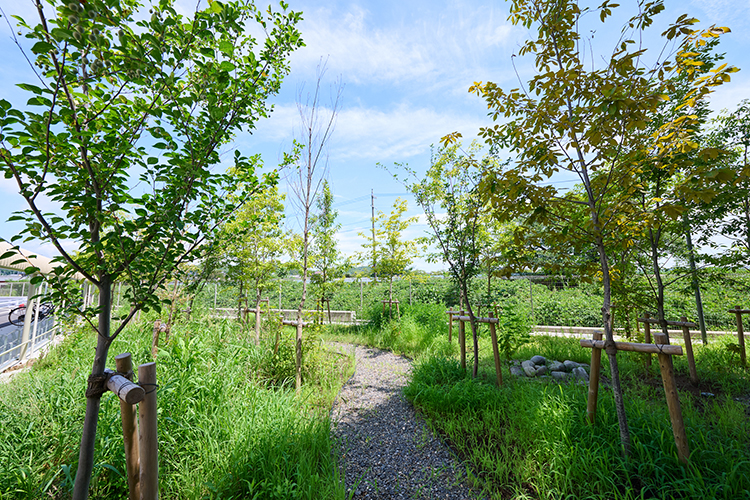
Area around the office
Our customer’s perspective
We are proud to have completed a facility that embodies the social role in our corporate philosophy of living together with the community and contributing to the development of society at large.
The decision behind the installation of the biotope was the fact that even though this is a distribution center, it can be a place where the local community and living creatures can coexist and can also serve as a place for environmental education for the next generation. Events such as living creature observations have served more than we ever imagined as opportunities to connect with the local community.
Within the company as well, we also feel that more and more employees are becoming interested in biodiversity conservation through maintenance and management activities and participation in ABINC training sessions. We believe that biodiversity conservation efforts are cumulative, and one of the keys to success is how many people can be involved. We will continue to take on various challenges with our stakeholders while considering how to connect the knowledge gained from this project to a second case.
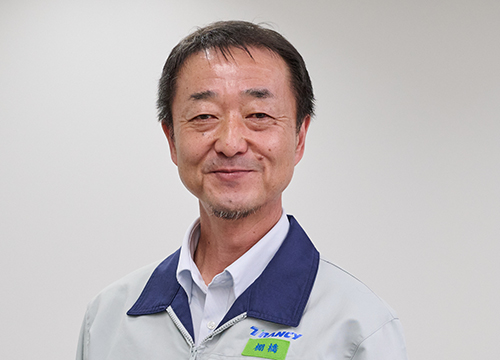
Akinori Tanahashi
Executive Officer and General Manager of Corporate Planning Department,
Japan Transcity Corporation
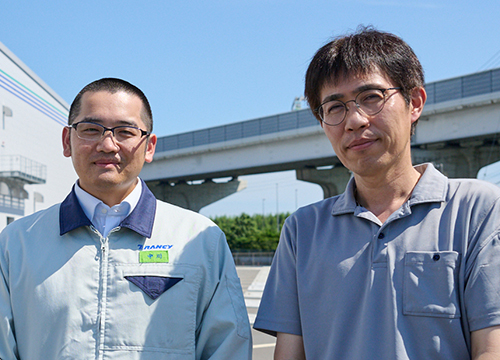
Tasuku Nakagawa (left)
Manager of Administrtion Department,
Japan Transcity Corporation
Naoki Yokoi (right)
Assistant General Manager of Sales Headquarters STCL Project Division,
Japan Transcity Corporation (former)
A sales representative’s perspective
Personally, this was my first time to be involved in biodiversity conservation, and I had to build up my knowledge and expertise from scratch. I believe that this facility is a success story because we visited the site many times, gained the understanding of the local community and government, and worked closely with Japan Transcity. I learned that there are many different approaches to biodiversity conservation, and I hope to apply the knowledge I gained here to future proposals to customers.
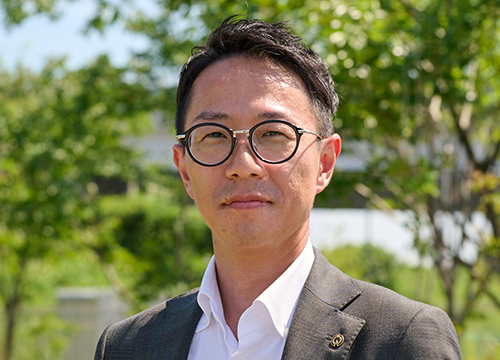
Satoshi Kuwabara
Chief of General Construction Division,
Mie Branch
A planner’s perspective
The construction site had been agricultural land surrounded by a river and hills, and many rice paddies still remain in the vicinity. To this end, we felt that biodiversity conservation efforts would lead to the development of a facility strongly in harmony with the surrounding area. In the future, we aim to create an environment where fireflies can also live, and hope that the facility will continue to be rooted in the community and loved for a long time, and through such efforts, we hope to enhance the corporate value of both companies.
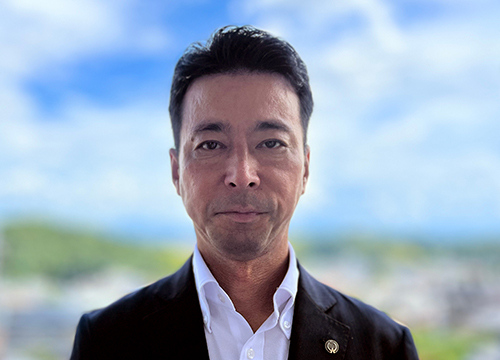
Hiroshi Shogaki
Deputy General Manager of Urban Development Department,
Head Office
Basic Information
(number of floors)
(3 floors)
creation: 40%
creation: 227%
* The information is current at the time of interviews (July 2024).



